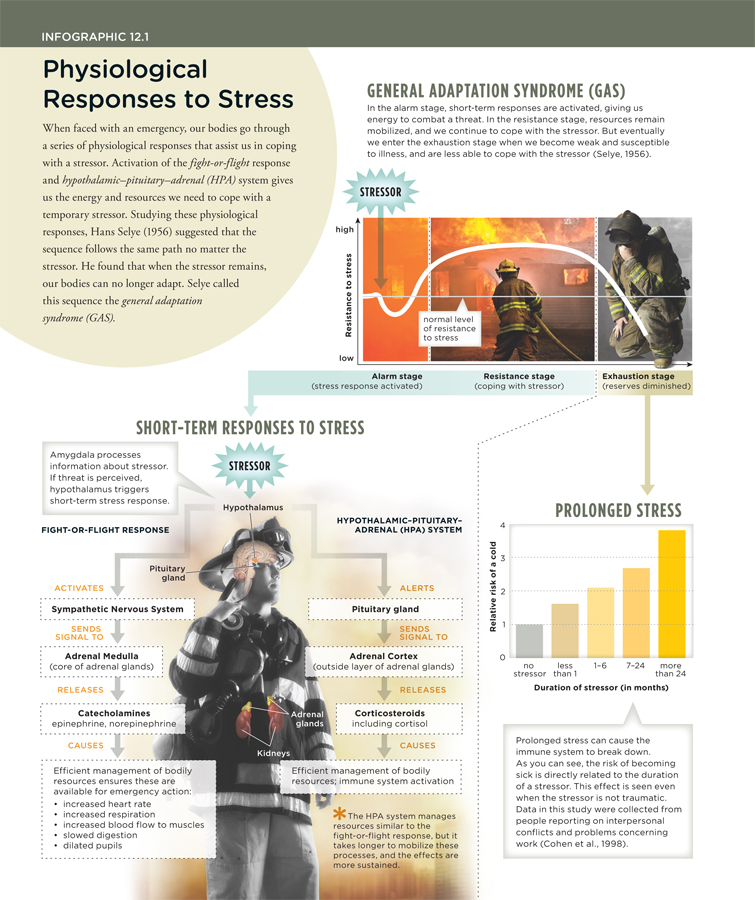Chapter 1. Physiological Responses to Stress
Infographic
Scientific American: Psychology
Infographic Activity 12.1: Physiological Responses to Stress
Physiological Responses to Stress

When faced with an emergency, our bodies go through a series of physiological responses that assist us in coping with a stressor. Activation of the fight-or-flight response and hypothalamic–pituitary–adrenal (HPA) system gives us the energy and resources we need to cope with a temporary stressor. Studying these physiological responses, Hans Selye (1956) suggested that the sequence follows the same path no matter the stressor. He found that when the stressor remains, our bodies can no longer adapt. Selye called this sequence the general adaptation syndrome (GAS).
Click the image to enlarge.
Click "Next" to continue.
1.1 Quiz
1. Victoria just found out that her daughter was injured at school. She was told that it is not a severe injury, but that the child is being transported to the hospital by ambulance just for precautionary measure. She gets the information she needs, cancels the meeting she was about to attend, and gets in her car to go to the hospital. According to the general adaptation syndrome, the initial activation of Victoria’s stress response that occurs when she finds out about the problem is the ________ stage.
| A. |
| B. |
| C. |
| D. |
2. Hadassah is writing a paper about the general adaptation syndrome, focusing on ways that it may differ from people of different cultural and ethnic backgrounds .She wants to study first the original form of the model, so that she can then examine these cultural variations. Whose work should she start by reading?
| A. |
| B. |
| C. |
| D. |
3. There is a specific sequence of activations that happens when we are confronted with a stressor that starts in the brain. Which of the following is not part of this multistep pathway?
| A. |
| B. |
| C. |
| D. |
4. Devonne was recently involved in an altercation with one of her neighbors. The neighbor was yelling loudly at her, and behaved in a threatening manner. As a result, Devonne’s fight-or-flight system activated, and this caused a massive release of ________ from the adrenal medulla into her bloodstream.
| A. |
| B. |
| C. |
| D. |
5. Stuart has been dealing with a problem at work for several weeks now. He had a project to complete, but at the last minute logistical problems arose and he has now been dealing with issue after issue. He knows that his job is in jeopardy if the project does not get completed within the next few days, and he has been under a lot of stress. Stuart is now starting to come down with a cold, and feels physically ill and drained. Which stage of the general adaptation syndrome is Stuart currently in?
| A. |
| B. |
| C. |
| D. |
6. When a stressor is perceived by the brain, a rapid process of analyzing it to determine its threat-potential takes place. Which part of the brain assesses whether or not the stimulus is threatening?
| A. |
| B. |
| C. |
| D. |
Activity results are being submitted...